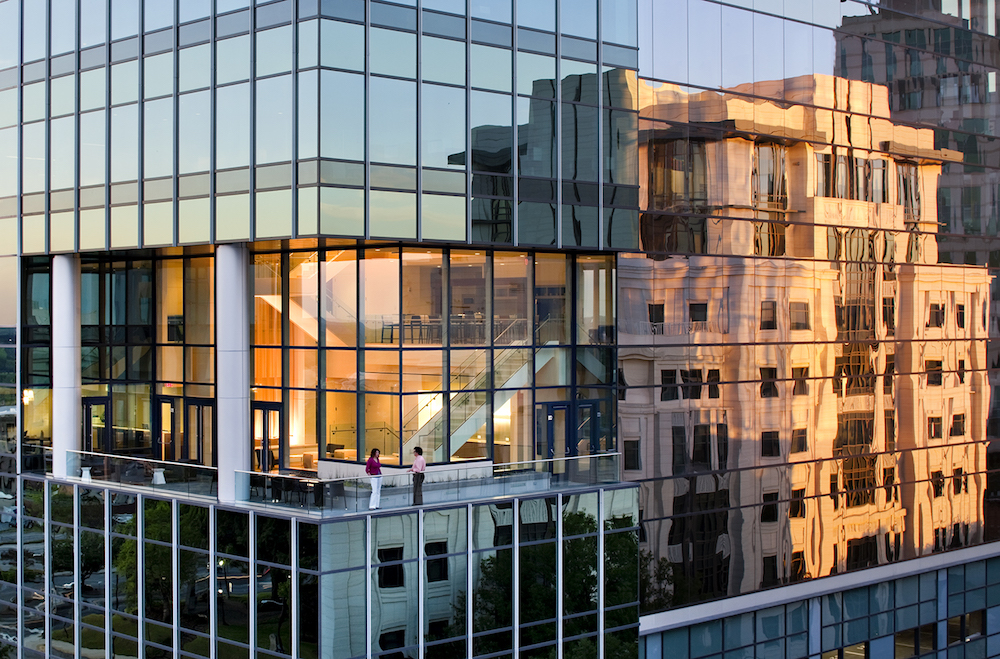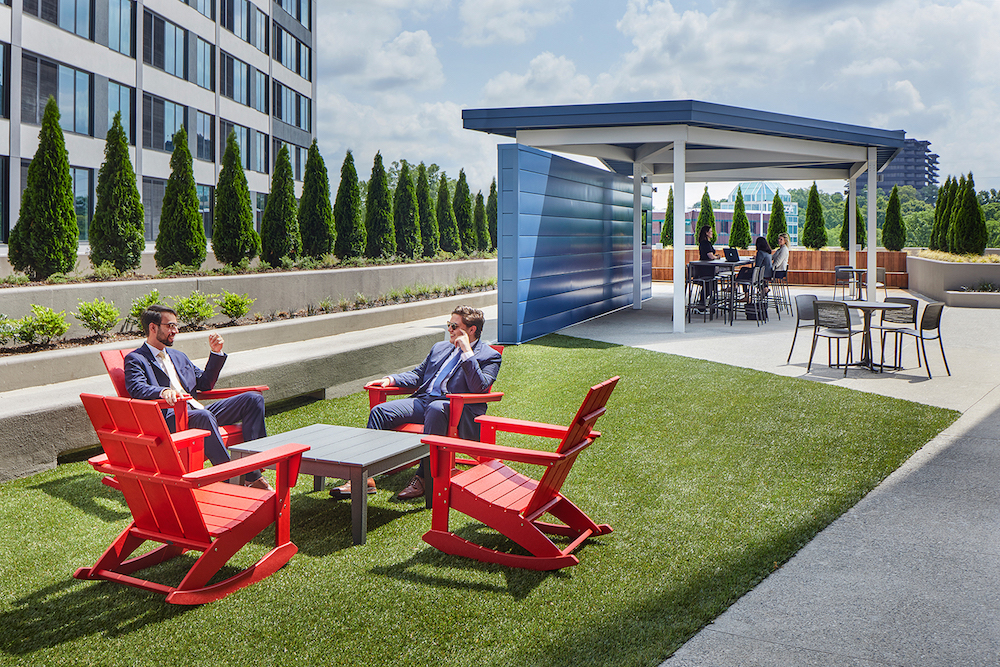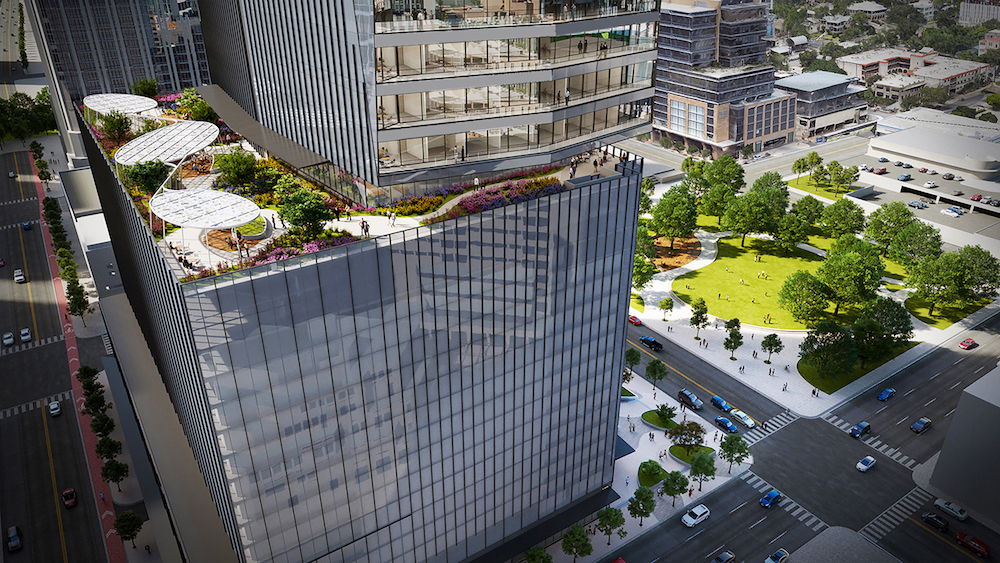As COVID has highlighted our everyday understanding of the health and safety of outdoor spaces, Jeffrey Paine of Duda|Paine Architects explores how designers can effectively create workplace terraces.

Our desire to get outside is not new. People have been enjoying balconies, terraces and green spaces connected to their workplaces, homes and communities throughout history. For many of us, nothing breaks up the workday’s normal pattern more effectively than taking a moment to step outside. According to University of Minnesota research, “Exposure to nature not only makes you feel better emotionally, it contributes to your physical wellbeing, reducing blood pressure, heart rate, muscle tension, and the production of stress hormones.”
The COVID-19 pandemic has highlighted our everyday understanding of the health and safety of outdoor spaces over indoor spaces, and fresh air over recirculated air. The result is a wave of businesses, organizations and educational institutions using inhabitable outdoor spaces for employees, students and others to enjoy. In our experience, once people start to use outdoor spaces as extensions of their workplace, the behavior becomes a healthy habit. The key is designing workplace terrace spaces that include many of the features found in today’s indoor environments. Mitigating nature’s forces like sun and wind is also important to ensuring these spaces are used regularly.
Outdoor Everywhere
The inclusion of outdoor workplace terraces and plazas in new buildings is important, especially those large enough to be inhabited by groups of people. This means thousands of square feet of functional, inhabitable, flexible outdoor spaces that present the potential to improve users’ sense of wellbeing.
Earlier design trends were centered around building outdoor plazas and walkways or shifting outdoor space up to a building’s upper levels, introducing views to the outdoor experience. More recently, the role of outdoor workplace terraces in the workplace has expanded to accommodate alternative work, connecting, meeting, conference, collaboration, event and dining venues. These spaces give employees alternative spots to accomplish their work, get that psychological break noted in the research above, and satisfy a new desire for safety against viral spread via access to fresh air for meetings and collaborations.

Greenery, Shades, Wind-blocks & Vistas
The success of exterior terrace space hinges on providing much more than outdoor access. These spaces extend today’s working environment and culture outside. Diverse, moveable and clustered furnishings, power access and WiFi infrastructure ensure flexibility in how a space is used. Garden areas with plantings and trees reduce heat island effect, control sound transmission and provide shade. Shade structures can be designed to shelter larger meeting setups. Wind is controlled with higher railings, windbreak structures, and step-backs from a building’s edge—all features that improve users’ sense of safety and reduce the impact of high winds in tower garden terraces.

Elevated terraces also provide incredible vistas for users. Views of the surroundings have a positive psychological effect. Being outdoors further offers a multi-sensorial experience of sights, sounds like birds chirping, and the sensation of a breeze across the skin. Research from Harvard Health Publishing indicates that nature’s sensorial qualities alone have a positive effect on mood and reduce stress. For example, at Main & Gervais (Image 1), the two-story tall terrace boasts views to the state capitol in Columbia, South Carolina.
Elevated gardens and terraces are also transforming parking real estate to build community between different building structures. Many recent projects are now including features such as garden terraces to provide connection points between office towers; terraces that cover parking and retail spaces; spaces that can host large events; and even spaces that connect the building directly to a public transportation station.

Reclaiming Urban Space
At The Dillon in Raleigh (Image 4) the public lobby was placed on the eight floor, where access to a sky terrace is part of a complex of spaces that include conference, fitness and public seating options and a restaurant/event space. This trend is growing among many urban tower projects in cities across the southeast—some started long before the pandemic—to reclaim the top level of parking decks to create highly usable outdoor space. Design and planning for projects such as The Republic in Austin (Image 3) solidified this new land use strategy with outdoor workplace terraces elevated to the building’s upper levels, where users gain perspective-shifting vistas.
The inclusion of outdoor workplace terraces and sky gardens in the modern workplace presents the ability to reclaim areas once devoted to low-use spaces such as the top of a parking structure. Buildings can also consider giving these spaces back to their communities by allowing public use. The goal of designers and clients should be to increase the function and use of outdoor spaces by allowing for everything from meetings, events, individual work, respite, and a prime, public space for activities that can bring together both office and residential tenants.

